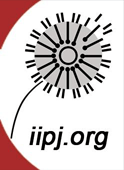Article Title
Policy (Mis)Alignment: Addressing Type 2 Diabetes in Aboriginal Communities in Canada
Abstract
In this article, we employ Bacchi’s (1999) What’s the Problem approach to policy analysis to examine Health Canada’s Aboriginal Diabetes Initiative (ADI) and the ways in which it articulates with existing federal policies that relate to three Aboriginal social determinants of health: colonialism, education, and health care. Focusing our analysis on the Aboriginal population with the highest prevalence of type 2 diabetes, First Nations, we argue that the ADI produces type 2 diabetes as a problem related to First Nations peoples’ apparently poor health decision making and lifestyle choices. Such a framing of the problem ignores the ways in which current federal policies are aligned in a way that undermines attempts, like the ADI, to improve First Nations peoples’ health. We argue that for rates of type 2 diabetes to decrease in First Nations communities, the federal government needs to re-align policies that affect all of the Aboriginal social determinants of health so that the startling inequities in health that exist between First Nations peoples and non-First Nations peoples, particularly those related to type 2 diabetes, can be addressed in a more effective fashion.
Creative Commons License

This work is licensed under a Creative Commons Attribution-Noncommercial-No Derivative Works 4.0 License.
Recommended Citation
Brooks, L. A.
,
Darroch, F. E.
,
Giles, A. R.
(2013).
Policy (Mis)Alignment: Addressing Type 2 Diabetes in Aboriginal Communities in Canada. The International Indigenous Policy Journal, 4(2)
. Retrieved from: https://ir.lib.uwo.ca/iipj/vol4/iss2/3
DOI: 10.18584/iipj.2013.4.2.3
COinS
